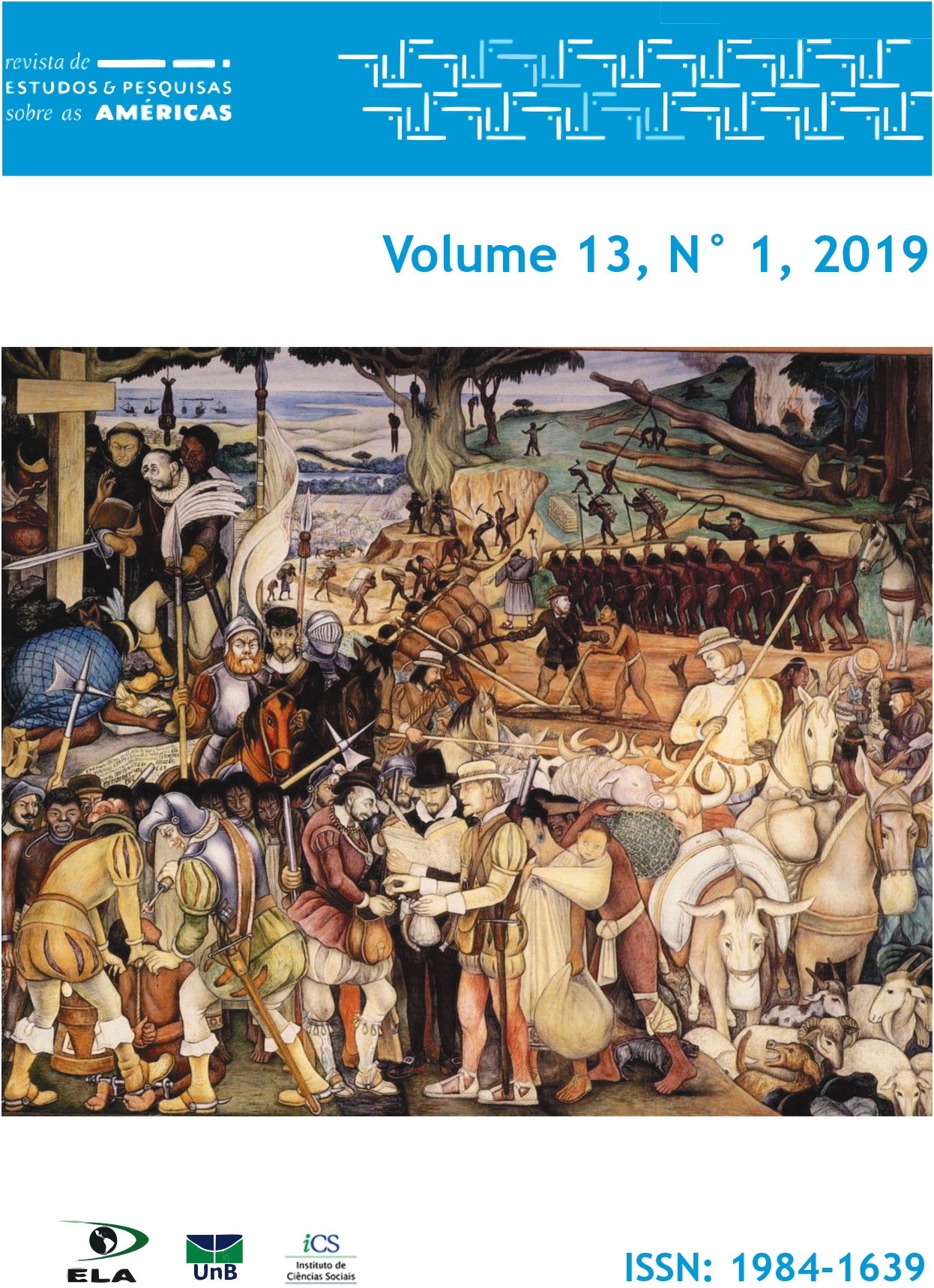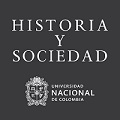Como gerenciar as migrações na América Latina? O caso espanhol como modelo a seguir
DOI:
https://doi.org/10.21057/10.21057/repamv13n1.2019.21875Keywords:
international migration flows, migration legislation, integration public policies, Latin AmericaAbstract
This research paper focuses on the key challenge that poses the sudden and massive reception of immigrants to build inclusive societies that guarantee peaceful coexistence between natives and newcomers. Some Latin American countries are experiencing unexpected changes in population models, resulting in receiving states of international migration flows. Yet, both the underdevelopment of legislation on immigration and the absence of public integration policies show the need to pursue successful management models as an example. This paper presents an analysis of the Spanish case study between 1998 and 2008, highlighting the driving factors that enabled the integration of newcomers in that decade. Considering the cultural proximity to Latin America and other matching contextual aspects, the article concludes with some recommendations for adopting similar migration and integration policies inspired by the Spanish case.
Downloads
References
ACOSTA, Diego. & GEDDES, Andrew. “The Development, Application and Implications of an EU Rule of Law in the Area of Migration Policy”. Journal of Common Market Studies, n. 51, pp. 179-193, 2013.
AGUELO, Pascual & CHUECA, Ángel. “La reforma de la Ley de Extranjería. Una visión crítica desde los derechos humanos”. Revista de Derecho Migratorio y Extranjería, n. 22, pp. 109-146, 2009.
ALBA, Susana; FERNÁNDEZ, Ana & MARTÃNEZ, Ubaldo. Crisis económica y nuevo panorama migratorio en España, Colección Estudios, No. 65, Madrid: Fundación 1 de mayo, 2013.
APARICIO, Marco. “La última reforma de la Ley de Extranjería: un análisis crítico a la luz de su falta de eficacia y eficiencia”. Revista de Derecho Migratorio y Extranjería, n. 6, pp. 31-54, 2004.
ARANGO, Joaquín. “La explicación teórica de las migraciones: Luz y sombra”. Migración y Desarrollo, n. 1, pp. 1-30, 2003.
ARANGO, Joaquín. “Inmigración, cambio demográfico y cambio social. Información Comercial Española”. ICE: Revista de Economía, n. 815, pp. 31-44, 2004.
CARRERA, Sergio & ATGER, Anaïs. Integration as a two-way process in the EU? Assessing the relationship between the European Integration Fund and the Common Basic Principles on Integration. Brussels: Centre for European Policy Studies (CEPS), 2011.
CEBOLLA, Héctor & PINYOL, Gemma. Retos de la política de inmigración española ante el cambio de ciclo. Notes Internacionals, 83, Barcelona: CIDOB, 2014.
Economic Commission for Latin America and the Caribbean (ECLAC). International migration, human rights and development in Latin America and the Caribbean, Summary and conclusions, ECLAC books, No. 97, 2008.
GARCÃA-JUAN, Laura. “La política de integración de inmigrantes en el nuevo Fondo de Asilo, Migración e Integración de la Unión Europea. El caso español en el punto de mira”. Revista de La Facultad de Derecho y Ciencias Políticas, v. 46, n.124, pp. 93-115, 2016.
http://doi.org/http://dx.doi.org/10.18566/rfdcp.v46n124.a06
GARCÃA-JUAN, Laura. “Medidas y condiciones de integración de inmigrantes: una propuesta europea difícil de articular en España”. Migraciones, n. 38, pp. 87-110, 2015. DOI: https://doi.org/10.14422/mig.i38.y2015.004
HERNÁNDEZ, Beatriz & LEBRET, Pierre. “La cooperación europea en materia de inmigración: el caso de España y la comunidad latinoamericana”. Revista de Estudios Sociales, n. 42, pp. 80-92, 2012.
Instituto Nacional de Estadística (INE), 2008, Estadística de Migraciones 2008.
Instituto Nacional de Estadística (INE), 2015, Estadística de Migraciones 2015.
International Labour Organization (ILO). World of Work Report: Developing with Jobs, 2014.
International Labour Organization (ILO). World employment and social outlook: Trends 2017.
International Organization for Migration (IOM). Glossary on Migration, International Migration Law, Series No. 7, 2006.
IZQUIERDO, Antonio & LEÓN-ALFONSO, Sandra. “La inmigración hacia dentro. Argumentos sobre la necesidad de coordinación de las políticas de inmigración en un Estado multinivel”. Política y sociedad, v. 45, n. 1, pp. 11-39, 2008.
JOPPKE, Christian. “Beyond national models: Civic integration policies for immigrants in Wertern Europe”. West European Politics, v. 30, n. 1, pp. 1-22, 2007.
JUBANY, Olga. & GÜELL, Berta. The national policy frame for the integration of newcomers in Spain. Second Report of the PROSINT Project ”•Promoting Sustainable Policies for Integration. Barcelona: Universidad de Barcelona, 2011.
KOOPMANS, Ruud. “Trade-Offs between Equality and Difference: Immigrant Integration, Multiculturalism and the Welfare State in Cross-National Perspective”. Journal of Ethnic and Migration Studies, v. 36, n. 1, pp. 1-26, 2010.
KOSTOVA, Miroslava. Una evaluación del último proceso de regularización de trabajadores extranjeros en España (febrero-mayo de 2005). Un año después, Documento de Trabajo (DT) 15/2006. Madrid: Real Instituto Elcano, 2006.
MOYA, David. “Los informes municipales de arraigo social y disponibilidad de vivienda adecuada expedidos a los extranjeros extracomunitarios: el papel en Cataluña de la Oficina del Padrón Municipal”. Fundación Democracia y Gobierno Local, n. 17, pp. 134-151, 2008.
MORENO, Susana. “Políticas de integración y derechos culturales. Los planes de inmigración de la Junta de Andalucía”. Alteridades, v. 20, n. 40, pp. 35-48, 2010.
OEA-SICREMI. International Migration in the Americas, First Report of the Continuous Reporting System on International Migration in the Americas (SICREMI), 2011.
LÓPEZ, Pablo. “La política de integración de la Unión Europea”. Migraciones, n. 22, pp. 221-256, 2007.
RINKEN, Sebastian; GODENAU, Dirk; MARTÃNEZ, Antidio y MORENO, Gorka. La integración de los inmigrantes en la sociedad española: debilidades y fortalezas en tiempos de crisis. Barcelona: Anuario CIDOB de la Inmigración, pp. 206-223, 2016.
RINKEN, Sebastian. “Actitudes hacia la inmigración y los inmigrantes: ¿En qué es España excepcional?”. Migraciones, n. 37, pp. 53-74, 2015
http://doi.org/10.14422/mig.i37.y2015.003
SOLANES, Ángeles. “Un balance tras 25 años de leyes de extranjería en España: 1985-2010”. Revista del Ministerio de Trabajo e Inmigración, n. 90, pp. 77-100, 2010.
Spanish Government. Organic Law No. 7/1985 of 1 July on the rights and freedoms of foreign nationals in Spain.
Spanish Government. Royal Decree No. 1119/1986 of 26 May approving the implementing regulation of Organic Law No. 7/1985.
Spanish Government. Royal Decree No. 155/1996 of 2 February approving the implementing regulation of Organic Law No. 7/1985.
Spanish Government. Organic Law No. 4/2000 of 11 January on the rights and freedoms of foreign nationals in Spain and their social integration.
Spanish Government. Royal Decree No. 2393/2004 of 30 December approving the Regulation of Organic Law No. 4/2000 of 11 January on the rights and freedoms of foreign nationals in Spain and their social integration.
Spanish Government. Organic Law No. 2/2009 of 11 December amending Organic Law No. 4/2000 of 11 January on the rights and freedoms of foreign nationals in Spain and their social integration.
Spanish Government. Royal Decree No. 557/2011 of 20 April approving the Regulation of Organic Law No. 4/2000 of 11 January on the rights and freedoms of foreign nationals in Spain and their social integration, following its amendment by Organic Law No. 2/2009.
STEFONI, Carolina. (2012). “Transformaciones sociales a partir de los nuevos procesos migratorios”. In: Generación de Diálogo Chile-Perú/ Perú-Chile. Documento 4: Aspectos migratorios, edited by Konrad Adenauer Foundation, Lima, Instituto de Estudios Internacionales (IDEI), 2012, pp. 11-28.
STEFONI, Carolina. “Formación de un enclave transnacional en la ciudad de Santiago de Chile”. Migraciones Internacionales, n. 7, No. Especial 1, pp. 161-187, 2013.
TUR, Rosario. La integración de la población inmigrante en el marco europeo, estatal y autonómico español. Madrid: Iustel, 2009.
URTEAGA, Eguzki. “Los modelos de integración europea”. Revista Nómadas, Mediterranean University Institute, Universidad Complutense de Madrid, v. 26, n. 2, pp. 17-30, 2010.
WALLACE, Sarah. “Integration Requirements for Integration's Sake? Identifying, Categorising and Comparing Civic Integration Policies”. Journal of Ethnics and Migration Studies, v. 36, n. 5, pp. 753-772, 2010.
ZAPATA-BARRERO, Ricard. “La política del discurso sobre la inmigración en España”. In: El discurso político en torno a la inmigración en España y en la Unión Europea, edited by the Ministry of Labour and Immigration, Madrid: Documents of the Permanent Observatory of Immigration, n. 16, pp. 117-160, 2008.
ZAPATA-BARRERO, Ricard (Coord) Políticas y gobernabilidad de la inmigración en España. Barcelona: Ariel, 2009.
Downloads
Published
How to Cite
Issue
Section
License
The published material is the property of the Journal, and may be reproduced in whole or in part with indication of the source.
Copyright: Authors will be responsible for obtaining the copyright of the material used. Authors who publish in this journal agree to the following terms:
a)Authors retain the copyright and grant the journal the right of first publication, with the work simultaneously licensed under
the Creative Commons Attribution License which allows the sharing of work with acknowledgment of authorship and initial publication in this journal.
b) Authors are authorized to take additional contracts separately, for non-exclusive distribution of the version of the work published in this journal (eg, publish in institutional repository or as a book chapter), with acknowledgment of authorship and initial publication in this journal.
c) Authors are allowed and encouraged to publish and distribute their work online (eg in institutional repositories or on their personal page) at any point before or during the editorial process, as this can generate productive changes as well as increase the impact and the citation of the published work (See The Effect of Free Access).
















